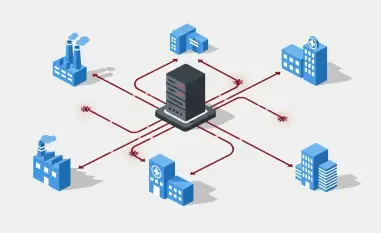In the ever-evolving landscape of cybersecurity, Silk Typhoon has emerged as a formidable adversary, continually adapting to the latest techniques and technologies to infiltrate US IT infrastructure. Since late 2024, this Chinese state-sponsored hacking group has been wreaking havoc by exploiting zero-day vulnerabilities in edge devices. Their advanced methods encompass using stolen API keys and credentials to bypass security protocols, infiltrating downstream customer environments. The group particularly targets IT supply chains and local governments, posing significant threats to national security and information integrity.
Advanced Infiltration Techniques
Exploiting Zero-Day Vulnerabilities
Silk Typhoon’s primary modus operandi involves exploiting zero-day vulnerabilities present in edge devices, allowing them to penetrate and gain access to IT networks. Once inside the network, the hackers capitalize on these vulnerabilities to exfiltrate sensitive data. Their targets range from hardware and network components to software and services, with the goal of compromising the entire supply chain. By exploiting these vulnerabilities, Silk Typhoon circumvents traditional security measures designed to protect IT infrastructure, making their attacks highly effective and difficult to detect until significant data exfiltration has already occurred.
Reconnaissance and Data Exfiltration
After gaining access, Silk Typhoon conducts extensive reconnaissance within the infiltrated network to identify valuable data. They employ stolen API keys to survey and catalog network architecture, user credentials, and sensitive data repositories. The hackers then proceed to slowly and stealthily exfiltrate this data to avoid raising suspicion. Targets typically include government policies, law enforcement investigations, and other sensitive information pertinent to national security. Moreover, their techniques for masking these activities—such as using legitimate API pathways and blending into ordinary network traffic—render detection an even greater challenge.
Methods of Persistence
Resetting Admin Accounts and Deploying Web Shells
To ensure continued access to compromised systems, Silk Typhoon has developed sophisticated persistence mechanisms. They habitually reset administrative accounts, deploy web shells, and create new user accounts, making it challenging for system administrators to uproot their presence fully. By resetting admin credentials, hackers can maintain a foothold within high-level control points of a network. Deploying web shells further allows them to execute commands remotely, manipulate the infected system, and facilitate data exfiltration. These methods enable long-term access to critical network resources without immediate detection.
Credential Dumping and Password Spraying
One of the most alarming aspects of Silk Typhoon’s approach is their implementation of credential dumping and password-spraying techniques. Once entrenched within a network, the group extracts Active Directory credentials and targets key vaults to steal passwords. They use password-spraying techniques to compromise additional accounts without triggering security alerts typical of brute-force attacks. This gives Silk Typhoon the ability to move laterally within the network, escalating their privileges, and accessing a broader scope of sensitive data. Their ability to leverage these credentials complicates detection and enhances their capacity for sustained espionage.
Mitigation and Response
Monitoring Suspicious Activities
Given the sophisticated nature of Silk Typhoon’s attacks, cybersecurity experts urge organizations to implement rigorous monitoring mechanisms. It is essential to monitor log activity related to Entra Connect, service principal actions, newly created accounts, and any unusual VPN activity. These measures help detect anomalies indicative of Silk Typhoon’s presence. Furthermore, auditing OAuth applications and monitoring SharePoint activities for signs of data exfiltration can help identify compromised systems. These monitoring strategies are critical for early detection and mitigation of ongoing attacks, minimizing potential damage.
Implementing Robust Security Protocols
In today’s ever-changing field of cybersecurity, Silk Typhoon has surfaced as a highly capable adversary that consistently adapts to new techniques and technologies to breach US IT infrastructure. This Chinese state-sponsored hacking group has been causing considerable disruption since late 2024 by exploiting zero-day vulnerabilities in edge devices. Their sophisticated tactics include the use of stolen API keys and credentials to circumvent security protocols, gaining access to downstream customer environments. By specifically targeting IT supply chains and local governments, Silk Typhoon presents serious threats to national security and the integrity of critical information. Their ability to bypass sophisticated defenses and infiltrate sensitive systems highlights the urgent need for enhanced security measures and vigilance. As cybersecurity continues to evolve, it’s crucial for organizations to stay ahead of adversaries like Silk Typhoon to protect vital infrastructure and maintain the integrity of national information networks.













